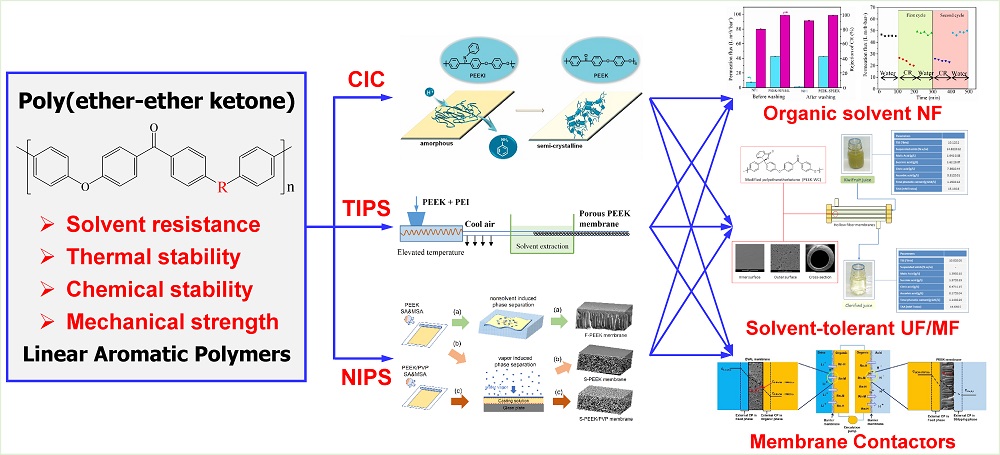More than 130 countries and organizations around the world have made net-zero commitments and strive to achieve carbon neutrality by the middle of the 21st century to address the problem of global warming [
125,
126]. CO
2 capture and storage is one of the key approaches to reducing CO
2 emissions and mitigating change of the global climate. The amine absorption process is the most well-known technology and widely commercially used for CO
2 capture from flue gas owing to high CO
2 removal efficiency and stable operation [
127]. However, there exist some significant limitations within amine absorbents such as large equipment size, excessive energy to regenerate the absorbent, equipment corrosion, solvent loss and so on [
128]. Gas membrane separation was reported as a technically and economically alternative for post-combustion CO
2 capture. Yet in practical applications, multiple membrane stages are always required to produce more than 95% pure CO
2 product from flue gases [
119]. Combining the advantages of solvent absorption and membrane processes, the membrane contactor has attracted attention as a cost-effective technology for CO
2 capture from flue gases, in which the membrane is required to be sufficiently stable and permeable for CO
2. PEEK is a carbocyclic polymer endowed with excellent chemical, thermal and mechanical stability, which can be used as an excellent candidate membrane material applied in membrane contactor operated under complex harsh environmental conditions [
129]. What’s more, the ether oxygen structure in the polymer chain has a good affinity to CO
2 molecules, leading to a better CO
2 dissolution selectivity.
















